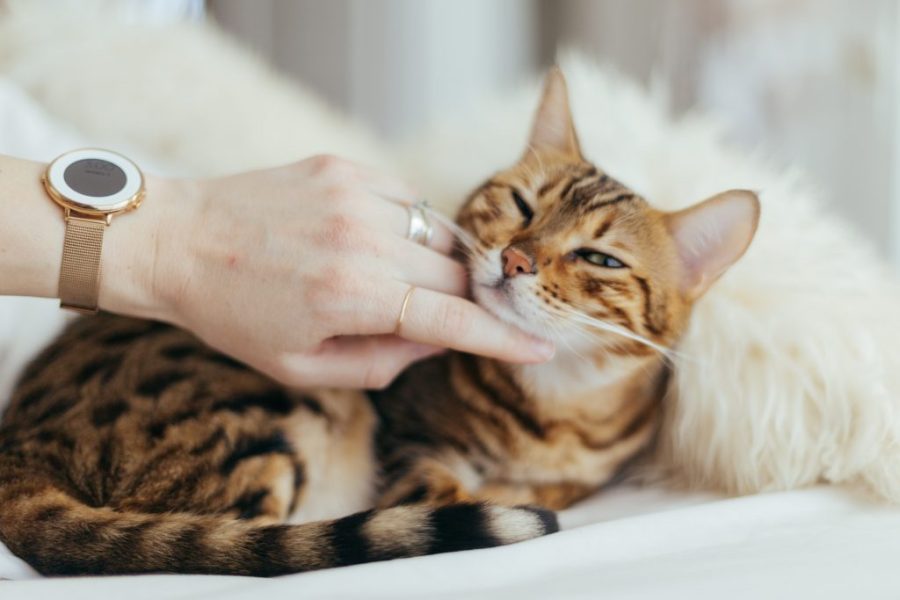Does Breast Feeding Increase Risk of Ear Infections
Just like humans, cats can get ear infections. When your pet is hurting or in pain, it can be difficult or distressing to watch. Luckily, there are ways that you can help so your pet can be on the road to recovery.
If your cat is suffering from an ear infection, there are steps that you can take to help relieve the symptoms. That being said, this article is in no way a substitute for official veterinary advice. If your cat is experiencing an ear infection, it's important to reach out to your veterinarian and hear what they have to say to rule out further complications or causes.
Treating a cat ear infection isn't difficult, but it will make a huge difference in making sure your cat is comfortable. Here's how to tackle it.
How to Tell Your Cat Has an Ear Infection

You might be wondering how to even tell if you cat has an ear infection. What are the signs and symptoms to look for? Because cats don't get ear infections very frequently, the cause might be complex when they do. This means that if you suspect your cat has an ear infection, the best thing to do is promptly take your pet to the vet.
The number one sign that your cat is suffering from an ear infection is if they are frequently scratching or pawing at their ears. They might also be tilting their head in the direction of the impacted ear or even shaking their head.
There are also additional symptoms to look out for, as those could be rather inconclusive or vague. If you notice that your cat has black or yellowish discharge coming out of their ear, it's definitely time to consider a visit to the vet to make sure everything's okay.
You might also notice redness or swelling of the ear flap or ear canal. There may also be a waxy buildup on or near the ear canal.
If you smell something off, this can also be a telltale sign that there's something up with your cat's ear as a bad odor is another possible sign of an ear infection.
Your cat might seem off-balance or disoriented or seem to be experiencing some sort of hearing loss.
If there's a discharge coming from the ear that looks similar in appearance to coffee grounds, this is a symptom of ear mites, which could cause an ear infection.
Finally, you might notice a loss of hair or scabbing around your cat's face, ears, and neck. This could occur because your cat is scratching at its ears so frequently.
Ultimately, if you have any questions regarding whether your cat is experiencing an ear infection, it's a good idea to bring your cat into the vet's office. This will ensure that you catch an infection before it becomes a larger issue. Not to mention – ear infections are uncomfortable for your cat!

As we mentioned earlier, cats don't get ear infections regularly, so if there's any reason to believe they have one, it's time to rule out larger reasons for what's causing them.
Ear infections in cats are usually a secondary condition. What does that mean? That they're the result of another underlying medical issue. (The exception is when your cat could have picked up mites from another cat; that could ultimately cause an ear infection, too).
In fact, ear mites are one of the leading causes of ear infections in cats. When you bring your cat to the vet, the first thing that they're going to check for is likely going to be mites.
With cats, there are different types of ear infections: external and middle ear infections. Here are some of the things that can cause an infection:
- If your cat is experiencing an overgrowth of yeast or bacteria (often can be both)
- Allergies including food or pollen
- An autoimmune disease
- A ruptured eardrum
- Wax buildup in the ear canal
- Thick hair in the ear canal
- Foreign bodies in the ear
- An environmental irritant
- Improper ear cleaning
- Tumors or polyps within the ear canal
- Diabetes
- Immune suppressing diseases
It's also worthy of note that, typically, when there's an inner ear infection, it spreads from the middle of the ear canal.
You might be wondering if your cat is especially susceptible to getting ear infections. In fact, there are a few illnesses that can cause your cat to get ear infections more frequently than other cats.
Cats who have diabetes, a weakened immune system, or suffer from allergies are more likely to experience ear infections. In order to test if your cat has these illnesses, your vet might need to conduct blood testing. In addition to this, certain breeds of cats with small outer ears such as Himalayans or Persians suffer from ear infections more frequently.
How to Treat My Cat's Ear Infection

The way that a vet decides to treat a cat's ear infection is largely dependent on what caused the ear infection in the first place.
If the cause of the ear infection is ear mites or a yeast or bacterial infection, then your pet will be treated with anti-parasitics, antifungals, or antibiotics, depending upon the exact causation. These treatments come in ointment or ear drop form, so they're easy to put into your cat's infected ear.
If your cat's eardrum is okay, but if the infection has reached the middle of your cat's ear, then your pet might be prescribed oral or injectable antibiotics.
When your cat begins their treatment, the vet might decide to clip the fur around the ear canal. This will aid in the drying and cleaning of the ear canal. Once you're back at home, you should keep checking to make sure that the inside of your cat's ear flap is pink. The canal should be clear.
To put ear drops in, you should gently lift the ear flap and squeeze the solution into the ear canal. Finally, massage the base of the ear; this will help the medicine get where it's supposed to be in the cat's ear.
If your cat experiences chronic ear infections, treatment might be slightly different than if it is your cat's first ear infection. The vet might prescribe a medication that will help reduce the ear canal's tissue swelling. Lastly, surgery might be necessary to remove swollen tissue that has narrowed or even completely closed the ear canal.
How to Prevent a Cat's Ear Infection
While there's no way to entirely prevent a cat's ear infection, there are ways to help take care of your cat's ears to reduce the likelihood that your cat will suffer from one.
The first way to prevent your cat from getting a severe ear infection is to make a habit of inspecting your cat's ears regularly. This is especially relevant if your cat has a condition that makes them more likely to suffer from frequent ear infections. This doesn't have to be a daunting or long task; just simply take a quick look. A healthy cat's ear should be pink, wax-free, have no debris, and no foul odor.
In the event that you notice your cat's ears are changing color or scent, that might mean that an infection is beginning. Monitor it and if the situation worsens, bring your cat to the vet to prevent something small from turning into something more serious and dire.
Though cats are largely self-reliant when it comes to cleaning, you can ask your vet to demonstrate how to clean your pet's ears the right way. Be sure to never insert a cleaning device directly into the ear canal itself unless your vet has told you that it is safe to do so.
Conclusion
If you have any reason to believe your cat has an ear infection, it's best to begin treating it immediately to reduce the pain your cat is experiencing. While every cat is different, there are signs and symptoms you can look for in order to assess if your cat is suffering with an infection. Some cats are even more susceptible to getting ear infections because of other medical issues.
There are a lot of things that can cause a cat ear infection, and one of the leading ones is ear mites. Oftentimes, however, if there's an ear infection that isn't caused by mites, it's usually due to a different underlying issue.
Treating your cat's ear infection largely depends upon how severe the infection is, but it will often include some sort of antifungal, antibiotic, or antiparasitic. The most important thing is to make sure that your cat is looked at by a vet so that they can instruct you on how to take the proper next steps.
While there's no real way to prevent your cat from getting ear infections, you can dramatically reduce the likelihood by checking your cat's ears every so often.
SOURCE:
Pets WebMD: Ear Infections in Cats: Causes, Treatment, and Prevention (pets.webd.com)
How to Treat Ear Infections in Cats (thesprucepets.com)
Ear Infections in Cats (aspcapetinsurance.com)
Source: https://www.reference.com/pets-animals/how-to-treat-a-cat-ear-infection?utm_content=params%3Ao%3D740005%26ad%3DdirN%26qo%3DserpIndex&ueid=799a46af-ae9e-4a12-8b1b-a994208909a5
0 Response to "Does Breast Feeding Increase Risk of Ear Infections"
Post a Comment